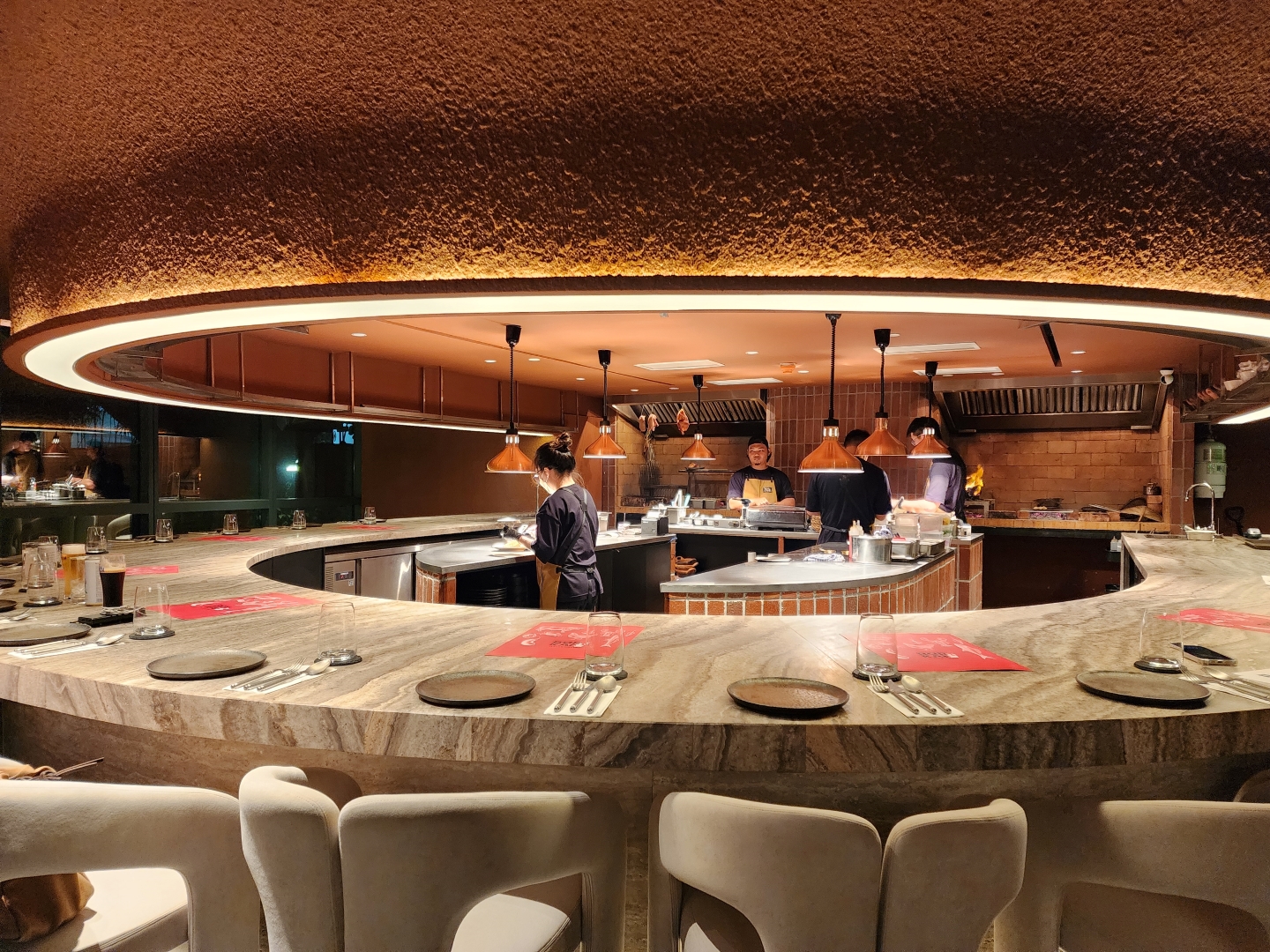
The chef’s table is perfect for couples, small groups or solo patrons who want to get up close with all the action (Photo: Emily Yap/ The Edge Malaysia)
There are not many restaurants in Kuala Lumpur that one would describe as “imposing” at first sight. But as you enter the large arch carved into the façade wall of Bar.Kar, you are met with a seemingly dead end stacked with chopped wood. A path opens to the side, leading guests into a mirrored entryway that gives the illusion that you are part of a cabin-esque installation. This would be the time to grab a quick mirror selfie.
Bar.Kar is the brainchild of Soh Yong Zhi and Lee Zhe Xi, the dynamic duo behind Eat and Cook who took the local gastronomic scene by storm with their “Malaysian-style omakase” concept. The restaurant quickly rose to fame after its debut in 2020, securing Asia’s 50 Best Restaurants’ American Express One To Watch award and ranking No 81 on the extended list the same year. Last year, Eat and Cook climbed up to No 79 and got a mention in the Michelin Guide.
Those in the know would already be aware of the young chefs’ zero-to-hero backstory. Lee and Soh, both turning 27 this year, were culinary school buddies at Berjaya University College. But unlike students who live it up at uni, the pair, along with their friend Steve Lee, were eager to assimilate into the restaurant industry as quickly as possible. Whenever they had a break, they would work part-time to gain experience. There was always fanciful talk about setting up a place together, where each chef would occupy a floor and focus on different cuisines, but after graduation, they went their separate ways, taking up roles at hotels and restaurants.
bar.kar_kl_entrance_1.jpg
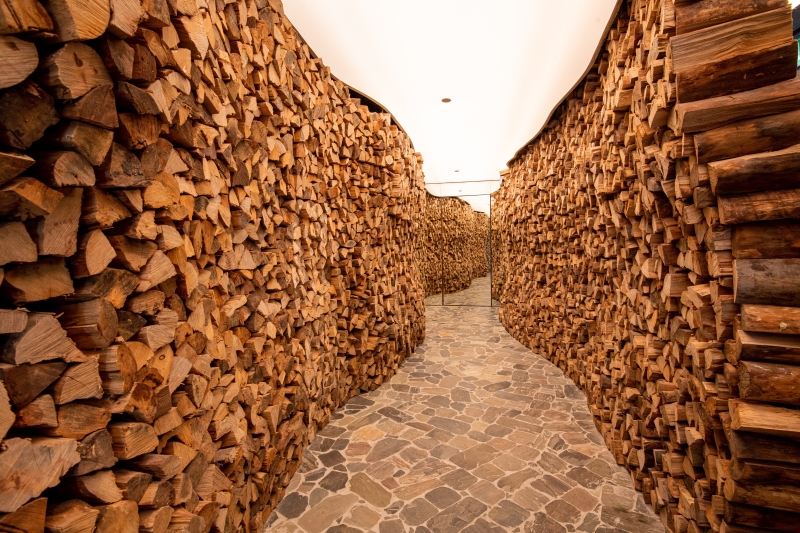
The pandemic put them all out of work and the duo somehow reconnected and talked about starting something together. “When you’re 23, you lack knowledge and experience. So, we thought we should start with something simple, which was Eat and Cook,” says Soh. It was located in a rundown mall, but the rent was cheap. They began by selling bento sets, and were soon offered an opportunity to prepare a four-course menu at a scant RM50 per pax. There was hardly any business anyway, so they took the plunge, tried it out, enjoyed it and pivoted.
Someone famous in the F&B industry visited and spoke about them on social media and suddenly they were fully booked for the next few months. When the second wave of Covid hit, things went awry once more. Around this time, Steve and his older brother Harry approached them to say they wanted to invest in their friends and open a proper eatery. The current Eat and Cook in Bukit Jalil came together in about two months and the rest is history.
The four had this idea of a wood-fired restaurant even before Eat and Cook was established, but shelved it up. After returning from the Asia’s 50 Best Restaurants ceremony in Singapore last year, they began scouting for a place. Initially, they were gunning for a spot at The Five, where cocktail bar Here & Now currently stands, but alas they missed it by a hair.
barkar_1.jpg
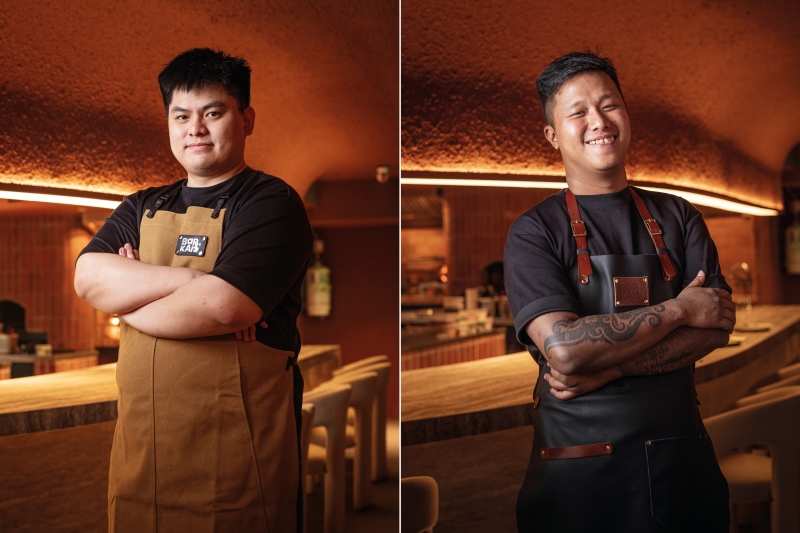
Nonetheless, the G Tower locale worked in their favour. It is in the heart of the city (with ample parking, no less) and makes a finer impression. They employed the designers of Spacemen studio, an architecture and design firm based in Kuala Lumpur and Shanghai, to transform the space.
The initial idea revolved around the concept of community cooking. Wood would have to be a main feature and the space should have a sort of cave-like feel to it. Inspiration also stemmed from earth ovens, an ancient cooking structure where a pit is dug and heat is trapped underground to smoke or bake food. A ring protrudes from the terracotta ceiling around the chef’s table, mimicking the organic curves of the cavity. Fiery and natural elements take shape in the form of red marble, travertine and dramatic light fixtures.
The large restaurant has several dining areas that cater to different needs. The chef’s table is perfect for couples, small groups or solo patrons who want to get up close with all the action. If the team is not too busy, they will gladly entertain any questions and, in some cases, share their recipes with you (that is, if you are nice). You might even score a tour around the walk-in dry-age chillers. “We’re very transparent here. At Eat and Cook, we have no secrets. If you want to know how we create a dish, I will tell you,” says Soh.
private_room_the_cave.jpg
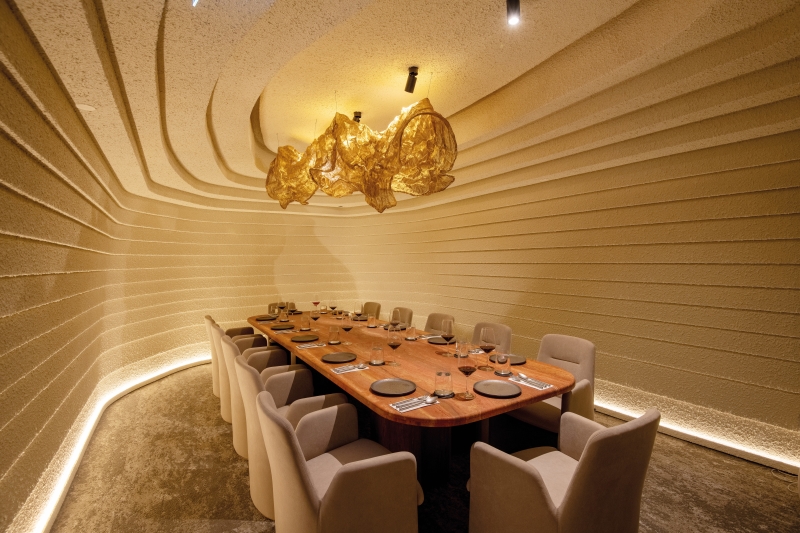
The main dining area is suitable for mid-sized groups and if you wish to host a small event for perhaps 30 people, it can be cordoned off. For extra privacy, the Cave Room, a personal favourite, can accommodate 12 (Soh says the private room was also inspired by the natural shape of a cave, but let us know if you agree it looks more like an igloo or inverted banneton).
Soh recalls that when strolling around on vacation, they wondered what their next restaurant would be called if they were to open a second place. “Bar.Kar came up because it was sort of an amalgamation of the words ‘bar’ and ‘bakar’, which means to burn or heat in Malay. It sounded very local. Our bar is more about hard liquor. We’re not serving craft cocktails because we’ve yet to find someone suitable to helm that part of the business.”
Kevin Ng, formerly of Communal Table by gēn, is head chef at the pork-free restaurant. Soh and Lee remain executive chefs and oversee the kitchens at Bar.Kar and Eat and Cook respectively.
ember_grill_dry_aged_australia_denver_lamb_ribs.jpg
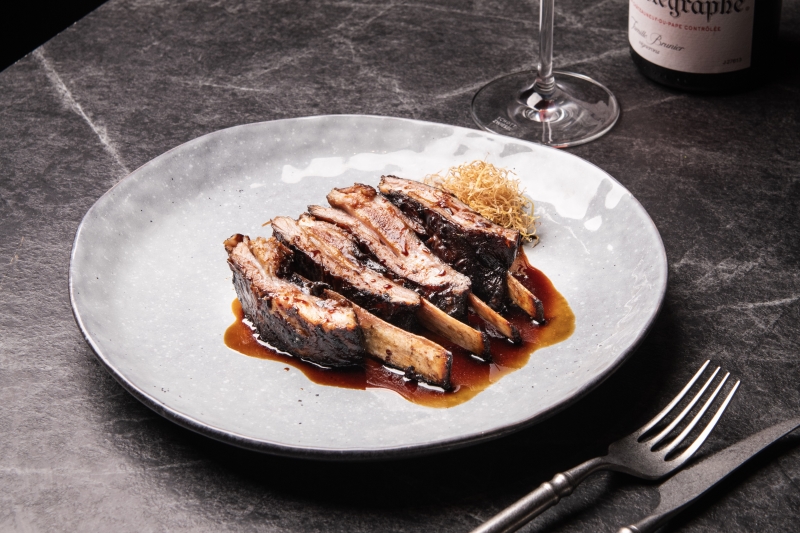
“Kevin’s signature is the Lamb Spare Rib. Think of it like zhu jiao chu (pig’s trotter in vinegar), but this dish uses two types of vinegar — a sweet and sour as well as a sour variety. So, it’s marinated, sous-vided and barbecued unagi-style. You put it on the fire, glaze with the sauce, then put it back on the heat,” says Soh. The repeated process creates a beautiful caramelisation without drying out the meat. It is the star dish for a reason.
“Wood and charcoal are different. Charcoal can maintain the heat for long periods because it is compressed, but wood provides a very special fragrance. Here, we use mangrove wood from Taiping. The challenge is being able to control and maintain the flame,” he says. Yes, even the chopped wood walls that form part of the dramatic entryway comprises of mangrove wood. And no, they do not collect any from the walls if supplies run low.
About 95% of the dishes incorporate fire in one way or another. Fresh oysters are not just shucked and placed on a plate with lemon wedges on the side. A special funnel is intensely heated until the interior glows like embers. Chicken fat is then dripped on top of the shellfish, anointing it with a smoky aroma that unexpectedly enhances its minerality. It is a fun dish to watch being prepared as the fire licks the rims of the funnel.
barkar_kl.jpg
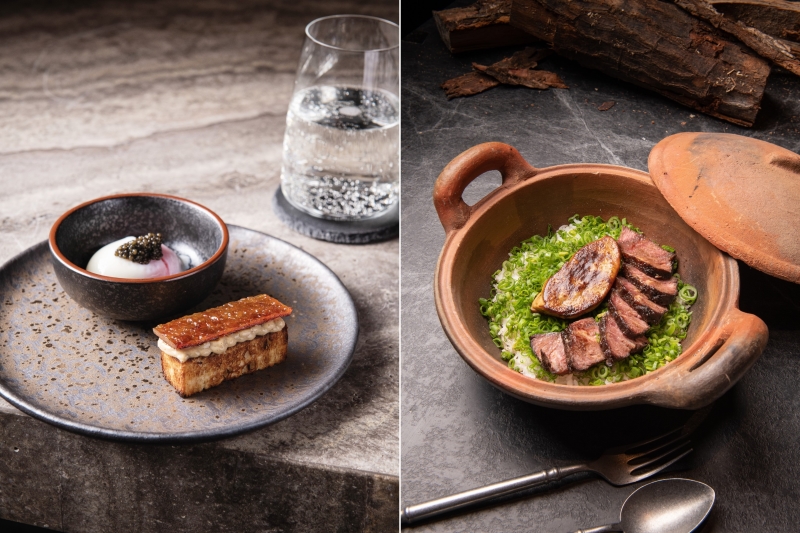
The Egg and Toast, a creative take on a perennial Malaysian favourite, may strike a chord with those who enjoy nostalgic flavours. A slice of chicken bak kwa (specially made in collaboration with Oloiya using buah kulim and chicken thigh) is sandwiched between two slices of Hainanese toast and paired with Eat and Cook’s signature century egg kaya and a gloriously golden 63°C sous vide Napier egg. That said, the naan with burnt starfruit salsa would be our choice of carbs if we had to pick. The smoky pillowy bread paired with the sweet and tangy sauce was quite the match made in heaven.
Eat and Cook’s famed claypot rice is available here too. Whether you choose to top yours with Wagyu beef cheek, foie gras, seafood, fish or uni, it would be sacrilegious not to scrape and enjoy the scorched Beras Salleh at the bottom. The fish dishes, on the other hand, were nothing to scream about.
Bar.Kar is the sort of place you bring your loved ones to while keeping it a secret from everyone else. And FYI, the ventilation is good, so you need not fear smelling like a walking BBQ pit later. But just perhaps, you may want to avoid sitting too near the flames.
Bar.Kar, Suites G-06, Ground Floor, G Tower, 199 Jalan Tun Razak, Kuala Lumpur. Opens daily, noon-3pm; 6-11pm. Call 011 2277 3131 for reservations.
This article first appeared on Jan 8, 2023 in The Edge Malaysia.


